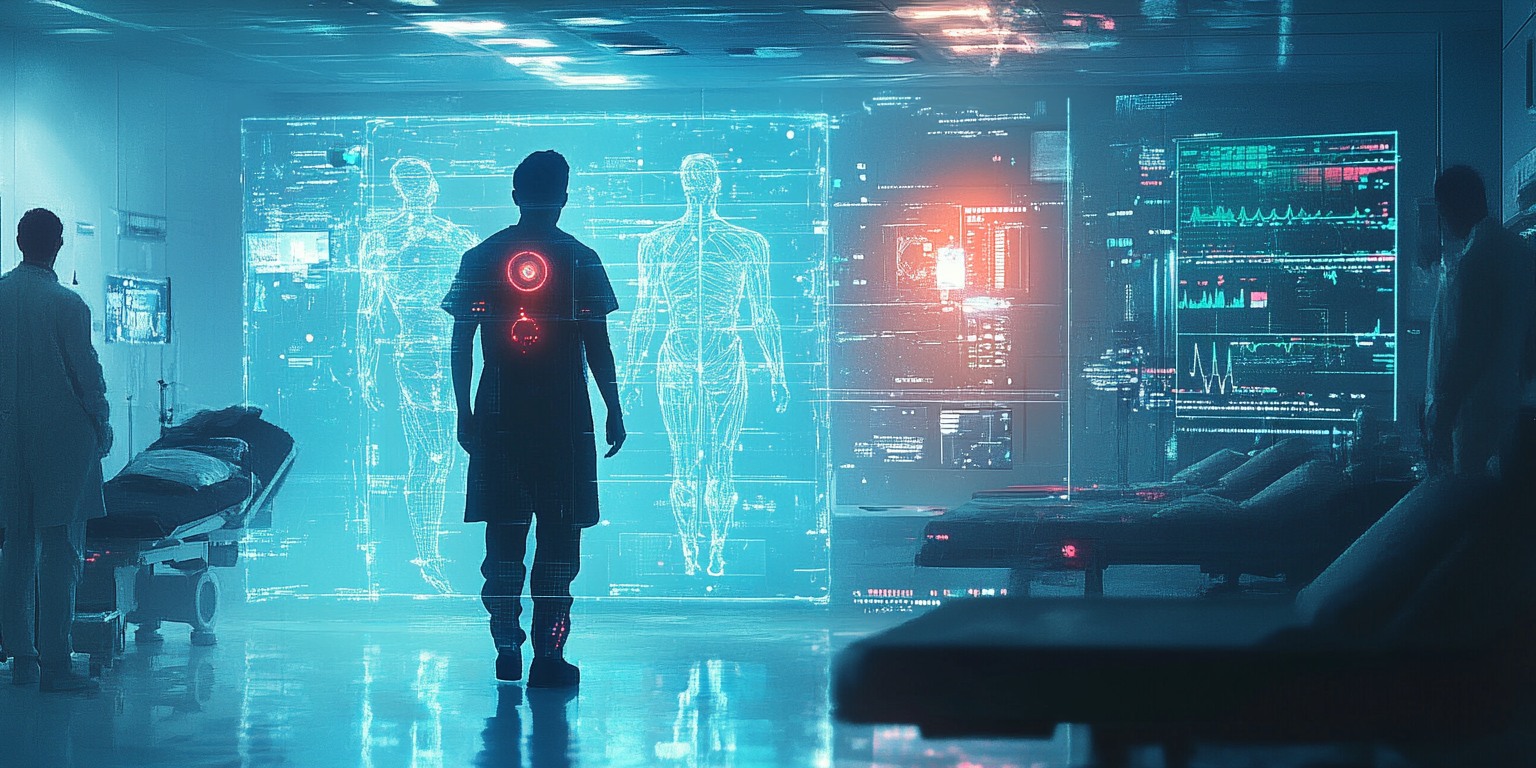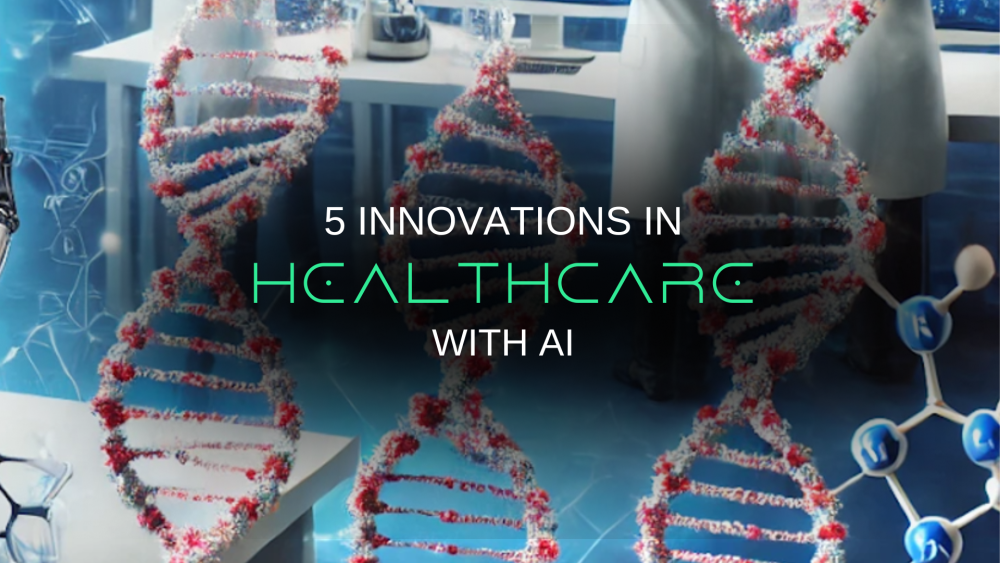5 AI Innovations Revolutionizing Healthcare
The emergence of AI in healthcare has been redefining how we diagnose, monitor, and treat patients. The technology drives significant innovation within the industry, facilitating rapid drug discovery and development advancements.
Since the outbreak of the pandemic, the adoption of AI in healthcare has been further accelerated. AI-based solutions proved invaluable in various areas, including diagnosis, detection, patient care, clinical trials, claims settlement, and virtual assistance. This blog explores 6 AI innovations that save lives and reshape the healthcare industry.
1. Early Cancer Detection
Traditional methods of cancer detection, such as biopsies and imaging tests, often require significant time and can be invasive. AI algorithms, however, can now analyze medical images with unprecedented accuracy and speed.
Breast Cancer Detection with Google Health
In 2020, Google Health developed an AI system that demonstrated superior accuracy in detecting breast cancer from mammograms compared to human radiologists. The system was trained using tens of thousands of mammograms and could identify cancer with fewer false positives and negatives.
How It Works
The AI system analyzes mammograms and highlights potential areas of concern, which radiologists can review. This speeds up the diagnostic process and reduces healthcare professionals' workload, allowing them to focus on cases that require urgent attention.

2. Personalized Treatment Plans
Thanks to AI, personalized medicine, which tailors treatment to each patient's characteristics, is becoming more attainable. Customized treatment plans improve patient outcomes, as treatments are tailored to each patient's needs and genetic makeup. This approach reduces the trial-and-error aspect of traditional therapies, leading to faster and more effective care.
Watson for Oncology
IBM's Watson for Oncology, introduced in 2016, has been at the forefront of this innovation. Watson uses AI to analyze patient data and medical literature to recommend personalized treatment options.
How It Works
Watson for Oncology processes vast medical data, including clinical guidelines, research papers, and patient records. By comparing this information with the patient's medical history, the AI can suggest treatment options most likely adequate for that individual.
3. Drug Discovery and Development
AI algorithms can analyze vast datasets to identify potential drug candidates much faster than human researchers. By speeding up the drug discovery process, AI is bringing new treatments to market faster, providing hope for patients with conditions with limited treatment options. This innovation also reduces the cost of drug development, making medications more affordable.
Fibrosis Drug Development
In 2019, Insilico Medicine, a biotechnology company, used AI to identify a new drug candidate for fibrosis in just 46 days. This was a groundbreaking achievement in the field of drug discovery.
How It Works
AI systems analyze biological data, such as genetic information and molecular structures, to identify compounds effective against specific diseases. These systems can also predict how these compounds will interact with the human body, reducing the need for extensive laboratory testing.
4. Mental Health Chatbots to Support Patients
AI is making significant strides in mental health. AI-powered tools are helping to diagnose and treat mental health conditions, providing support to patients who may not have access to traditional mental health services.
CBT Chatbot called Woebot
Woebot, an AI-based mental health chatbot, was launched in 2017. Woebot uses cognitive-behavioral therapy (CBT) techniques to help users manage their mental health.
How It Works
Users interact with Woebot through text messages, sharing their thoughts and feelings. The AI responds with CBT-based techniques to help users reframe negative thoughts and develop coping strategies. The chatbot also tracks users' moods and provides insights over time.
5. AI-Powered Robot-Assisted Surgery
AI-powered robotic systems are enhancing the precision and efficiency of surgical procedures. These systems, such as the da Vinci Surgical System, assist surgeons in performing minimally invasive surgeries with greater accuracy and control.

Da Vinci Surgical System
The da Vinci Surgical System was first approved by the FDA in 2000. The system includes multiple robotic arms equipped with surgical tools. These arms precisely replicate the surgeon's hand movements and offer a better range of motion than traditional laparoscopic instruments.
How It Works
AI algorithms process real-time data during surgery, assisting surgeons with precise movements and providing enhanced visualization. The system's robotic arms can perform delicate procedures with minimal incisions, reducing recovery time and minimizing complications.
How AI is Saving Lives in the Real World
World's First Super-Microsurgery Performed with Robotic Hands
Plastic surgeons at Maastricht University Medical Centre performed the world's first super-microsurgery using a robotic device to treat lymphedema. They used this advanced robotic system, created by the Eindhoven-based company Microsure, to suture extremely tiny blood vessels, ranging from 0.3 to 0.8 millimeters in diameter, in a patient's arm. This robotic system allows for an exceptional level of precision during the surgery.
Babylon App Using AI Applications in Healthcare
The digital-first health service provider that combined an artificial intelligence-powered platform with virtual clinical operations for patients, Babylon Health, is a practical example of how AI can transform doctor consultations. This app provides online medical consultations and healthcare services, offering the best AI-driven advice based on a patient's medical history and existing medical knowledge.
Users describe their symptoms, and the app uses speech recognition to match these symptoms with a database of diseases. After considering the patient's history and situation, the app suggests the following steps or treatments the patient should consider.
AI Assistant for Radiologists and Cardiologists
Medical Sieve is an AI assistant designed to aid radiologists and cardiologists in making clinical decisions. It gathers clinical, textual, and imaging data from patients' electronic health records. The system then analyzes this information to spot abnormalities and compiles a summary of the patient's condition related to their primary complaint.
The findings are processed through a reasoning engine that uses general clinical knowledge and data from similar cases to suggest possible diagnoses, helping doctors make informed decisions.
Smart ICU: AI-Enhanced Patient Monitoring
Researchers at the University of Florida Health are developing a "smart" ICU that uses cameras, wearable sensors, lighting sensors, noise meters, and other monitoring tools to detect when patients are in pain or need help.
AI algorithms analyze body movements and facial expressions to determine a patient's condition. This technology allows continuous patient monitoring, even when nurses are busy with other patients.
Final Word
The integration of AI in healthcare is not just a future promise but a present reality, significantly improving how we diagnose, monitor, and treat patients. AI innovations are making healthcare more efficient and accessible. They offer hope for better patient outcomes and a more responsive healthcare system.
As these technologies continue to evolve and improve, they hold the potential to transform healthcare further, making it more patient-centered and proactive in addressing medical needs.





